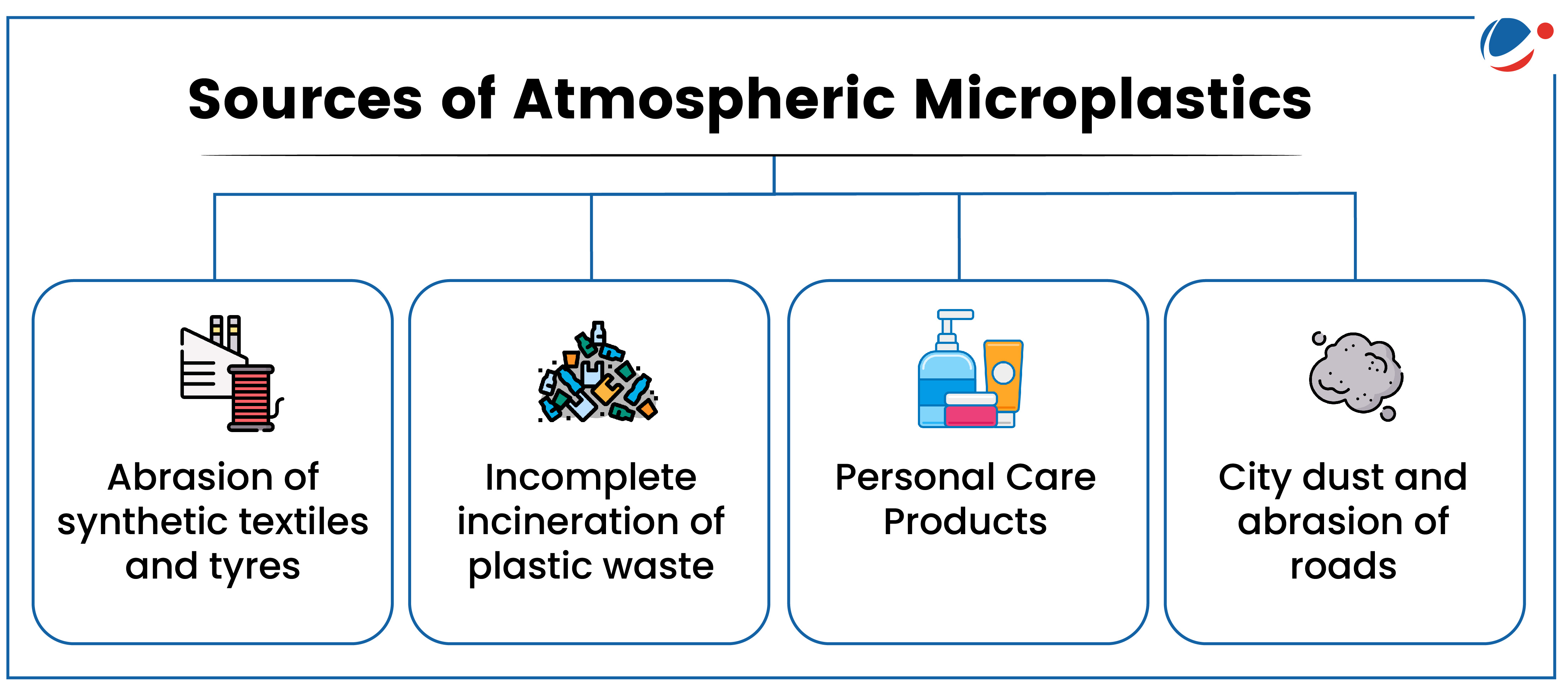Study demonstrated that microplastics act as ice nucleating particles, which are microscopic aerosols that facilitate the formation of ice crystals in clouds.
- Any kind of defect in the water droplet, whether that’s dust, bacteria or microplastics, can give ice something to form — or nucleate — around.
- Such tiny structure or defect can trigger the water droplet to freeze at warmer temperatures, thus affecting cloud formation.
- Clouds form when water vapour condenses on tiny floating particles and turns into liquid water droplets or ice crystals.

Impact of microplastics in Atmosphere
- Precipitation Patterns: In a polluted environment with many more aerosol particles, like microplastics, available water is distributed among many more aerosol particles, forming smaller droplets.
- This results in less rain and heavier rainfall when it rains.
- Global Warming: Amount of liquid water versus the amount of ice is also important in determining to what extent clouds will have a warming or cooling effect.
- Other Impacts: Weather forecasting, climate modeling and aviation safety by influencing how atmospheric ice crystals form clouds.
Initiatives taken to reduce MicroplasticsGlobal
India
|







